Surfing, a popular and exhilarating water sport, attracts millions of enthusiasts worldwide.
Despite its widespread appeal, many potential surfers and even experienced ones often wonder about the dangers associated with riding waves.
Understanding the risks involved in this activity is crucial for anyone looking to embrace the thrill of surfing while ensuring their safety.
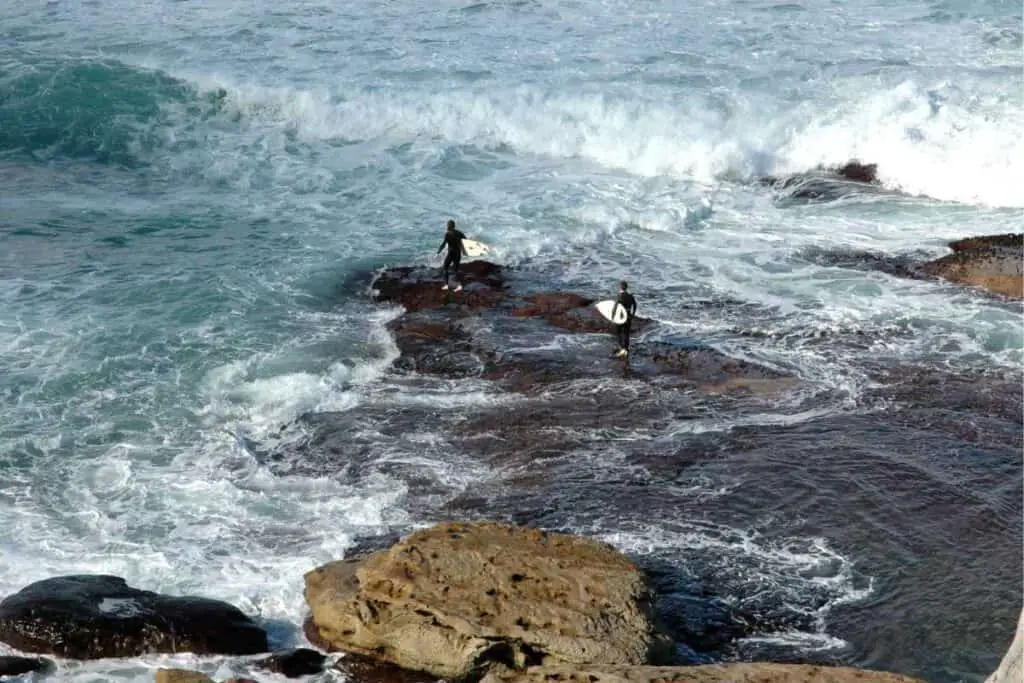
Variety of hazards present in the ocean contributes to the dangers of surfing.
These hazards include unpredictable wave conditions, powerful currents and undertows, and unforeseen encounters with marine life.
While big waves may pose an obvious threat, even smaller waves can become dangerous due to the sheer force with which they break, increasing the risk of injury or incapacitation.
However, it’s important to note that surfing is not as deadly as it may appear, provided one practices caution and gains proper understanding of the ocean environment.
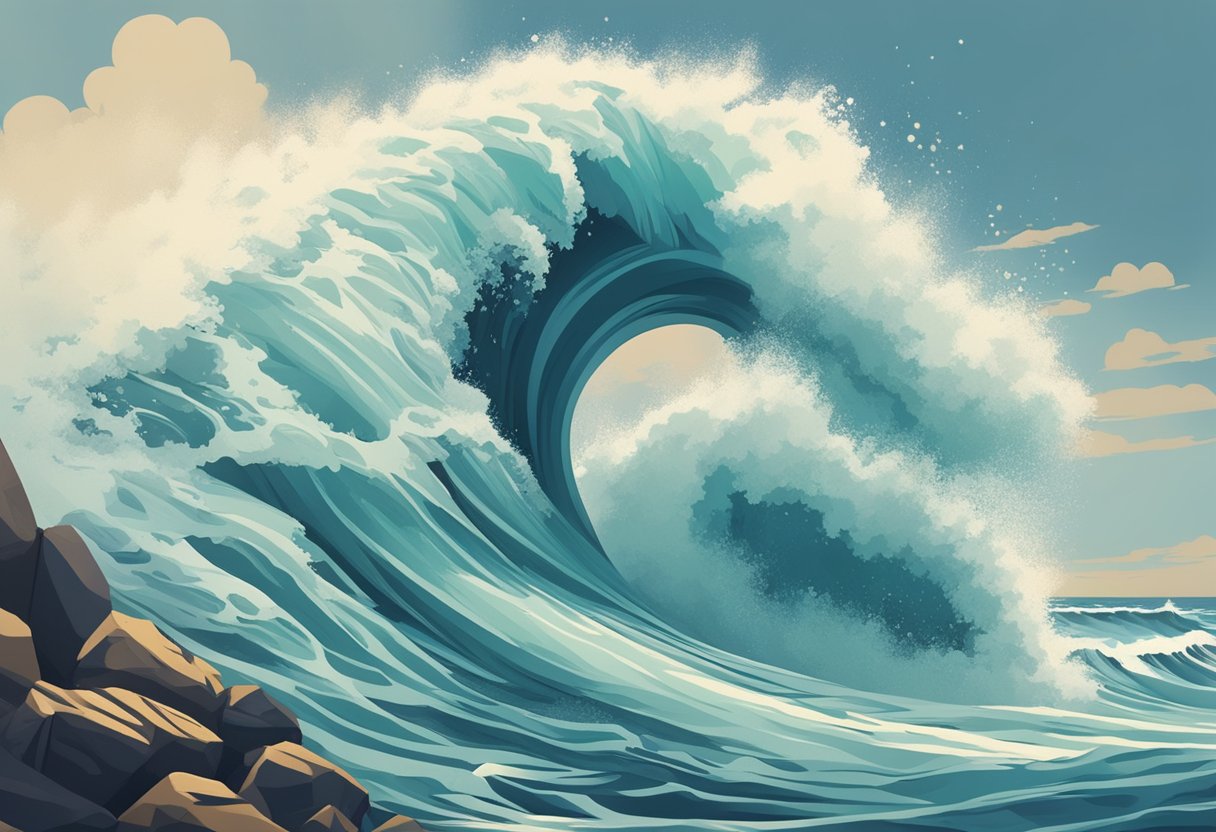
A surfer’s ability to assess the conditions, choose the right surf spot based on their skill level, and exercise sound judgment when paddling out can significantly mitigate these risks.
As surfers become more knowledgeable and confident in facing the ocean, they can enjoy their passion for this water sport while staying safe.
Understanding the Ocean Environment
Understanding Waves and Tides
When discussing the dangers of surfing, it is essential to have a clear understanding of the ocean environment.
Waves are created by the wind blowing across the ocean’s surface, causing ripples that can grow into larger swells.
These swells travel vast distances and ultimately reach the shoreline, where they break and create the waves surfers ride. The ocean floor’s shape and depth, along with the presence of rocks or reefs, can significantly affect the characteristics of these waves.
In addition to waves, the tides play a crucial role in creating a safe or dangerous surf environment.
The gravitational pull of the moon causes water levels to rise and fall throughout the day, creating varying conditions depending on the tide’s stage.
High tide can create powerful waves that break closer to the shore, while low tide may expose rocks and reefs that pose additional hazards to surfers.
Helpful for beginners – How to Practice Surfing at Home?
Recognizing Rip Currents and Undertows
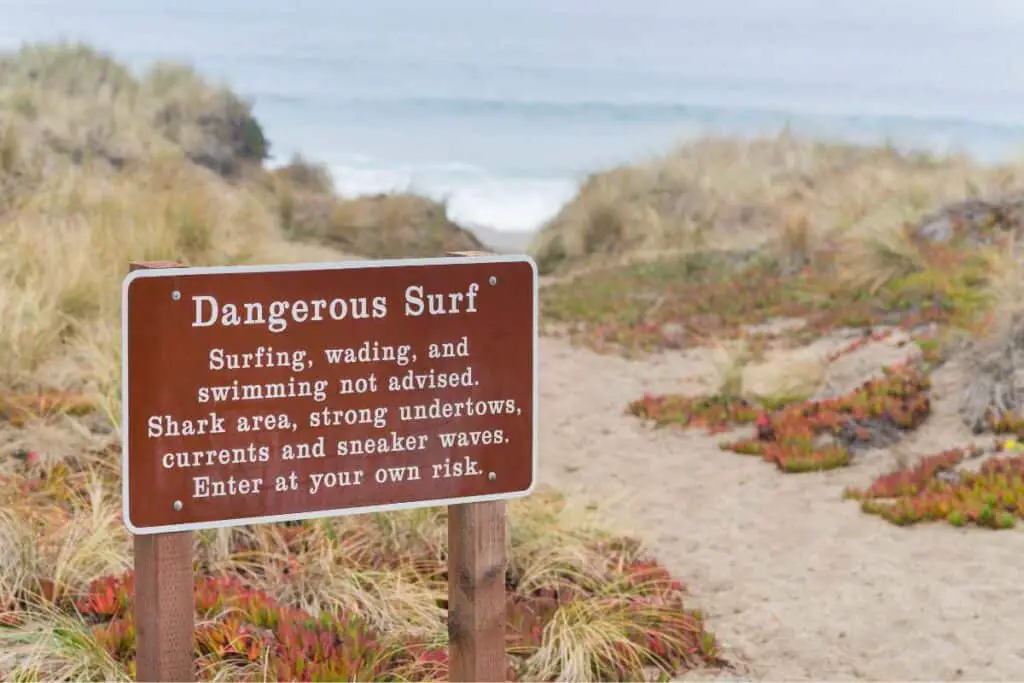
Rip currents and undertows are two of the most potentially dangerous elements surfers may encounter.
Rip currents are powerful, narrow channels of water that move away from the shore, often at much faster speeds than the surrounding water.
As a result, they can quickly sweep unsuspecting surfers out to sea. Undertows, on the other hand, are powerful underwater currents generated by breaking waves that can pull swimmers downward.
To avoid getting caught in rip currents or undertows, it is important for surfers to:
- Learn how to identify these conditions
- Always surfing with a buddy
- Only surf in areas where lifeguards are present
- Practice swimming techniques specifically designed for escaping from rip currents
Identifying Safest Surf Spots
When seeking safe surf spots, it is essential to consider the type of surf break.
There are three primary types of surf breaks:
- Beach breaks: These occur when waves break over a sandy ocean floor. They tend to have milder waves and are usually the safest option for beginners.
- Point breaks: Waves break around a headland or point where the ocean floor transitions from sandy to rocky. These breaks can offer longer and more predictable rides, but can also be more challenging and potentially dangerous as a result.
- Reef breaks: Waves break over a shallow reef or rocky outcrop. Reef breaks can produce powerful and hollow waves, posing a higher risk of injury due to the shallow water and potential for collisions with the hard, unforgiving reef.
In conclusion, understanding the ocean environment plays a crucial role in staying safe while surfing.
By recognizing the potential dangers posed by waves, tides, rip currents, undertows, and surf breaks, surfers can take the necessary precautions and choose the safest spot for their skill level, minimizing the risk of injury or worse.
The Physical Risks of Surfing
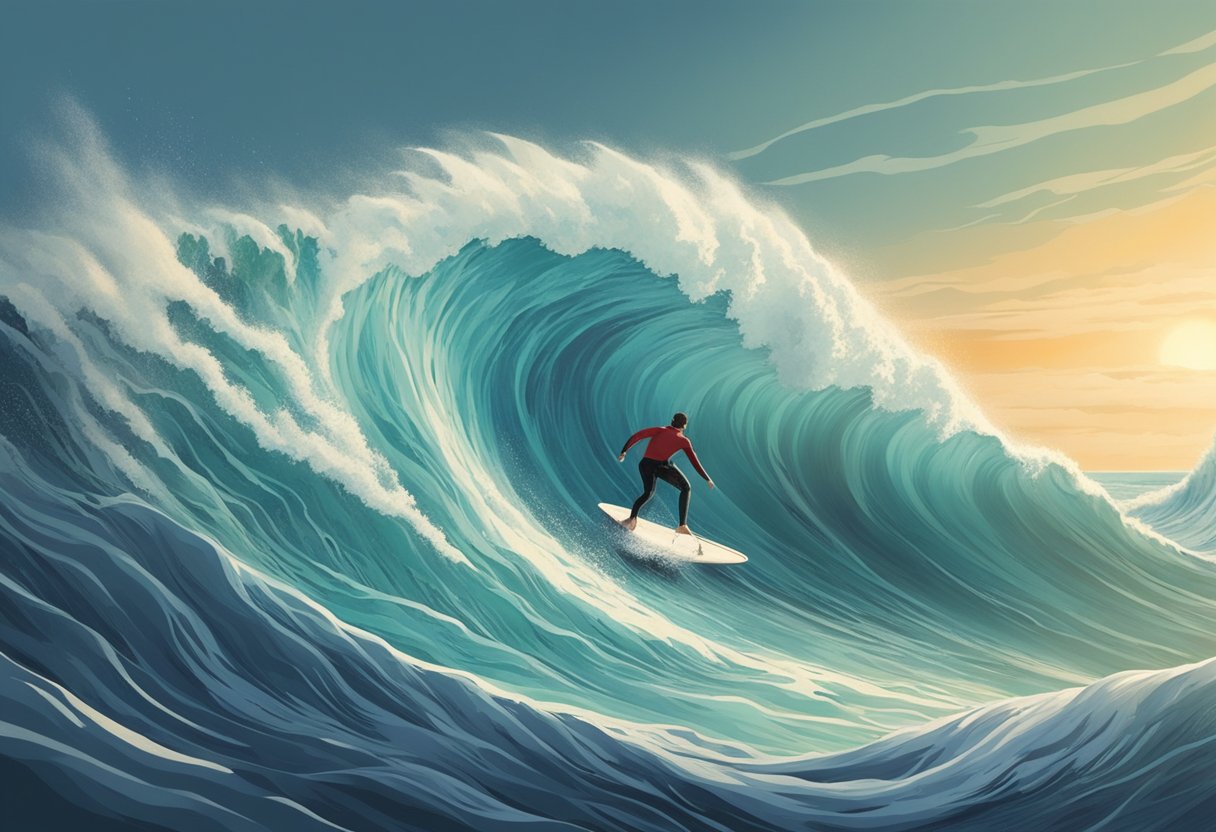
Surfing, while undoubtedly thrilling, exposes participants to various physical risks.
One of the most prevalent dangers is drowning. Despite their experience, surfers must never underestimate the power of water and the lurking hazards.
Big waves present a substantial challenge for surfers. Their sheer energy makes duck diving difficult and can keep a surfer underwater for extended periods.
When these massive swells break, they can cause broken bones, fractures, or potentially severe spinal injuries by forcing surfers against the ocean floor.
While spending time in the sun can be enjoyable, surfers must be cautious about sun exposure risks.
Frequent exposure to the sun’s rays can lead to sunburn, heat exhaustion, and, in extreme cases, heat stroke.
It’s essential to utilize sun protection measures and take breaks in shaded areas to avoid these issues.
Another notable concern in surfing is shark attacks. Although rare, the possibility still exists, and surfers should stay informed about shark activity in the area they plan to surf in. To minimize the chances of encounters with marine life, surfers should observe local guidelines and avoid areas known for shark sightings.
Surfing in cold water can pose various health hazards such as hypothermia and frostbite.
Insulated wetsuits can help reduce these risks, but surfers should be aware of signs indicating cold-related distress.
Physical injuries resulting from wipeouts are not uncommon in surfing.
These include cuts, bruises, or scrapes caused by sharp objects and coral reefs. It’s crucial to anticipate these dangers and surf in safer zones, where possible.
In summary, surfing presents several physical risks, including:
- Drowning
- Wipeouts
- Big waves
- Sun exposure and heat-related issues
- Shark attacks and other marine life encounters
- Cold-related health hazards, such as hypothermia
- Cuts, fractures, and spinal injuries
By understanding these risks, surfers can take appropriate precautions and enjoy the sport safely.
Board and Equipment Safety
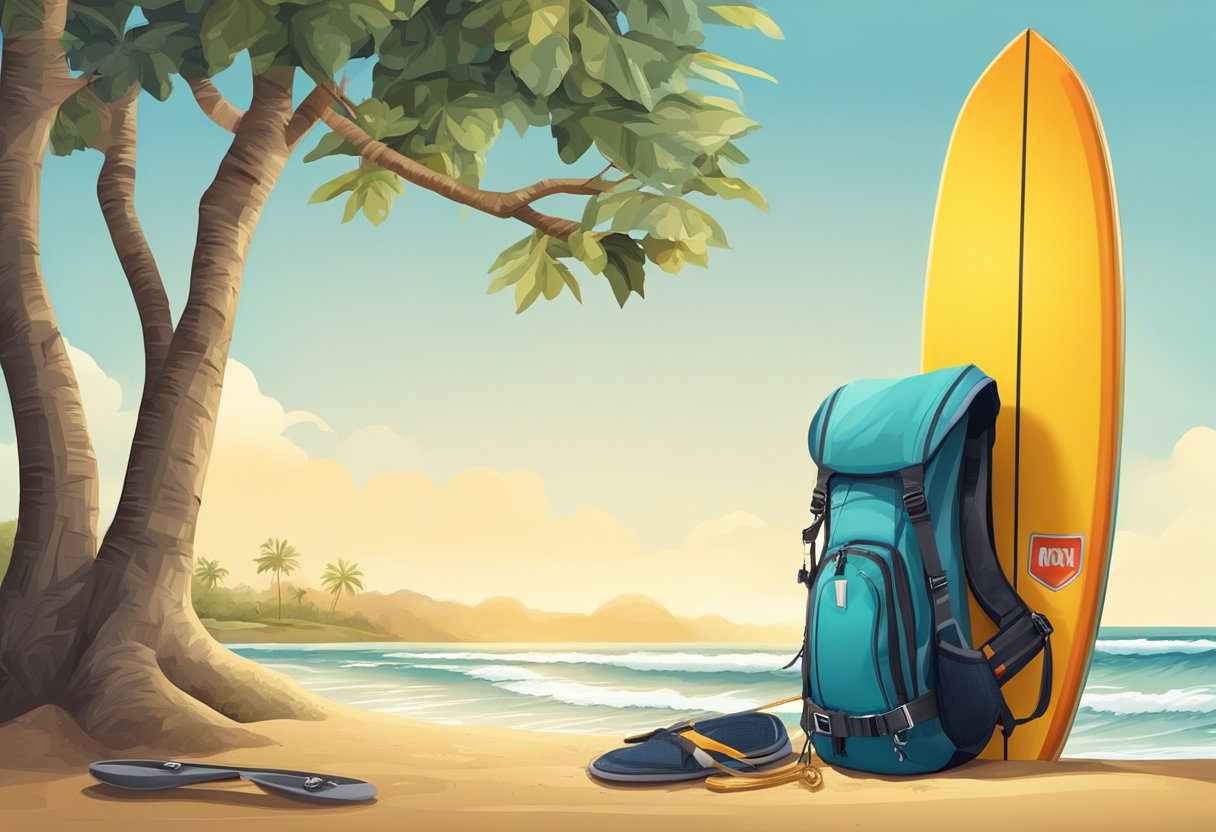
When it comes to surfing, ensuring the safety of both the surfer and those around them is of utmost importance.
- One of the key aspects of surf safety is paying attention to the board and related equipment. Using the right surfboard for individual skill level and conditions helps to enhance control, making it easier to manage the waves. Beginners should opt for larger, foam boards, while experienced surfers may choose smaller, fiberglass boards based on their expertise and specific surfing conditions.
- Surfboard leashes play a crucial role in keeping the surfer attached to their board. In case of a wipeout, the leash prevents the surfboard from getting washed away and becoming a hazard to other surfers, who may get injured due to the board’s weight and the force of the waves. To ensure effective use of the leash, it should be checked regularly for damage, ensuring its reliability. Find out here why you should not surf without a leash.
- Another essential component of surfboards is the fins. Fins offer stability and control while riding a wave, but they also have risks associated with them. As fins are often sharp, they can cause cuts and injuries if not handled properly. Therefore, surfers should be cautious while carrying their surfboards and entering or exiting the water. Here is how to install surfboard fins.
- It is also worth mentioning the need for a helmet when surfing. Although not very common, wearing a helmet can significantly reduce the risk of head injuries, especially during crowded surf sessions or when riding close to large rocks and other hazards.
Here is a brief overview of essential equipment and tips for enhanced safety:
| Equipment | Importance | Tips |
|---|---|---|
| Surfboard | Control | Choose the appropriate size and material based on skill level and surfing conditions |
| Leash | Safety | Regularly check for damage and ensure proper attachment to the surfboard |
| Fins | Stability | Be cautious while handling and entering/exiting water to avoid injuries |
| Helmet | Protection | Wear a helmet during crowded sessions or when surfing near hazardous objects |
In conclusion, taking necessary precautions with surfboards and related equipment can significantly reduce the risks associated with surfing, ensuring a safer and more enjoyable experience for all involved.
Hazards Posed by Marine Life and Natural Factors

Dealing with Marine Life
Surfing poses numerous dangers, and one of them is encountering various marine life.
- Sharks are among the most feared creatures for surfers, although the probability of a shark attack is minimal. Nevertheless, it’s essential to stay vigilant and avoid areas known for shark sightings or seal populations, as seals are the primary prey for some shark species. Read our guide to know what to do if a shark approaches you while surfing.
- Another concern is jellyfish and their potential to inflict painful stings. Jellyfish are more common in warmer waters, so make sure to research the local surf spot for their presence. If stung, surfers must be aware of the appropriate first-aid techniques.
- Surfers should also be cautious of coral reefs and sea urchins, which can cause severe cuts and puncture injuries. When surfing near reefs or rocky areas, it is crucial to maintain a safe distance from the ocean floor to avoid contact with these organisms.
Protecting Yourself against Natural Factors
There are also various natural factors that surfers must consider:
- Big waves: These can trap surfers underwater or slam them against the ocean floor, potentially causing injuries or drowning. It’s important to stay within one’s skill level and not surf waves too large or powerful for your experience.
- Rip currents: These strong currents can quickly drag surfers away from the shore and into deeper waters. Understanding ocean conditions and how to escape a rip current is vital for surfers’ safety.
- Hypothermia and sunstroke: For cold-water surfers, hypothermia is a risk that can be prevented by wearing appropriate wetsuits. Alternatively, sunstroke can occur in hot climates, so staying hydrated and taking breaks is essential.
- Rocks, sandbars, and seabed obstacles: Surfing in areas with various underwater obstacles increases the chances of surfers getting injured. To minimize risks, always research surf spots and be aware of any potential hazards before entering the water.
By being well-informed and prepared for these hazards, surfers can mitigate many of the dangers associated with marine life and natural factors while enjoying their time in the waves.
The Importance of Surfing Etiquette
Surfing can be an exhilarating and rewarding sport; however, it also carries its fair share of risks.
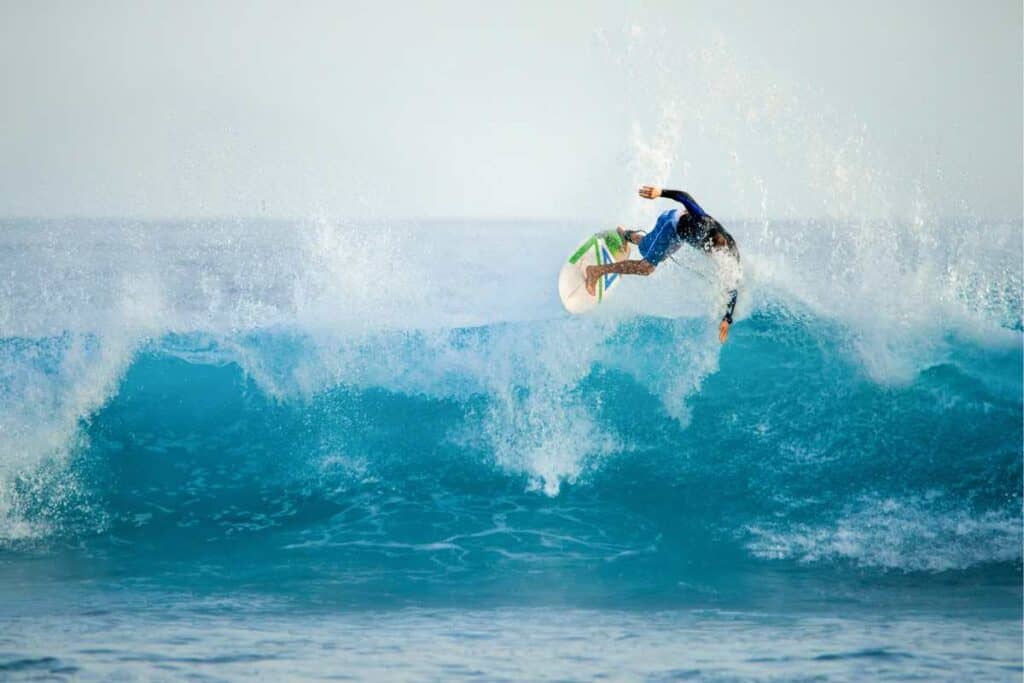
Understanding and adhering to proper surfing etiquette helps ensure the safety and enjoyment of all surfers in the water.
This section highlights the importance of these unwritten rules and focuses on various aspects of surfing etiquette.
One of the primary concerns in the water is ensuring the safety of other surfers. Awareness of everyone’s positions and constant communication are crucial in preventing accidents. If you’re paddling out, make sure to stay out of the way of surfers riding waves. This avoids possible collisions and maintains a smooth flow in the lineup.
Beginner surfers should take special care to understand and follow surfing etiquette. By doing so, they demonstrate respect for the sport and for the more experienced surfers around them.
Beginner surfers should never attempt to surf in a crowded lineup with advanced surfers. Instead, it is recommended to start at less crowded beaches suitable for their skill level.
It is essential to be aware of localism in some surf spots. Local surfers might have a strong connection to their home break and may not be open to sharing waves with visitors. In such cases, it is best to show respect and observe the pecking order in the lineup. This will lead to a safer and more enjoyable experience for everyone.
Know your limits when surfing. If you’re uncertain about your abilities, do not push yourself to surf waves that are too big or powerful.
This not only jeopardizes your safety but also makes it harder for others in the water. It’s essential to progress in your surfing journey patiently and understand that it takes time to build the skills needed to tackle more advanced waves.
Finally, always use a leash when surfing. This safety feature ensures that your board does not dangerously drift away from you after a wipeout.
A runaway board can injure other surfers or swimmers in the area. Moreover, it will help you quickly recover and get back on your board, minimizing the risk of collisions.
By observing proper surfing etiquette and understanding its importance, surfers of all levels can enjoy the sport in a safe and respectful way.
Environmental Considerations for Surfers
Surfing, as a popular water sport, demands attention to certain environmental aspects in order to ensure the safety of surfers and the sustainability of the ecosystems they interact with.
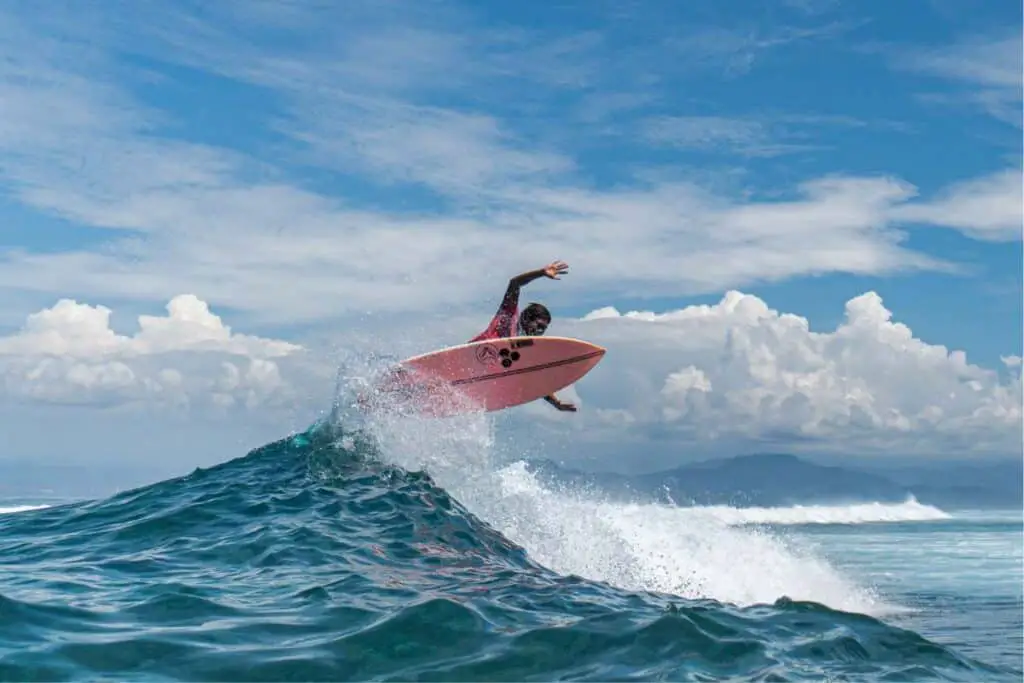
One major concern is the effect of water pollution on surfers’ health and the marine environment. Pollutants such as chemicals and sewage in the water can pose risks for both marine life and surfers themselves.
Good water quality is vital for surfers, as poor conditions can lead to illness. It is essential for surfers to be aware of current water quality at their preferred surfing locations, and to avoid areas with known pollution problems.
Surfing in different environments requires an understanding of the local seabeds and wave dynamics. In particular, a beach break may have a sandy seabed that is constantly shifting, creating an ever-changing environment and potentially resulting in unpredictable waves.
These factors can greatly affect the safety of surfers, as they may encounter unforeseen changes in wave size or frequency.
Besides water quality and seabed conditions, it is crucial for surfers to monitor weather conditions, such as winds, which can influence the surf.
Strong winds can generate large, powerful waves, which may be especially challenging for inexperienced surfers. Familiarizing oneself with local wave patterns and weather conditions can help surfers make informed decisions about when and where to surf.
The presence of lifeguards at surfing locations adds an extra layer of safety for surfers. Lifeguards are trained in water safety and rescue techniques, offering invaluable assistance in case of emergency. Surfers should always opt for beaches with lifeguard stations when possible.
When engaging in big wave surfing, such as at famous locations like Hawaii’s Pipeline or the Mentawai Islands (Ments) in Indonesia, surfers need to pay close attention to their physical and mental preparedness. Big wave surfers must have a strong mentality and excellent physical condition to face the risks these waves pose.
Mastering essential surfing techniques, like duck diving and maintaining balance, plays a significant role in improving surfers’ safety.
Duck diving allows surfers to go under approaching waves, preventing them from being pushed back towards the shore or dragged along the seabed. Strong balance skills help surfers navigate various wave breaks while minimizing the risk of injury.
Final Words
In conclusion, the environmental considerations for surfers extend beyond just their personal safety. By being aware of their surroundings, adopting sustainable practices, and encouraging marine conservation, surfers can contribute to the overall health of the ecosystems they enjoy.
